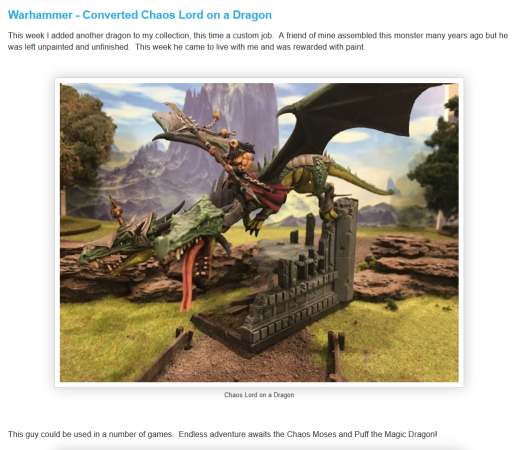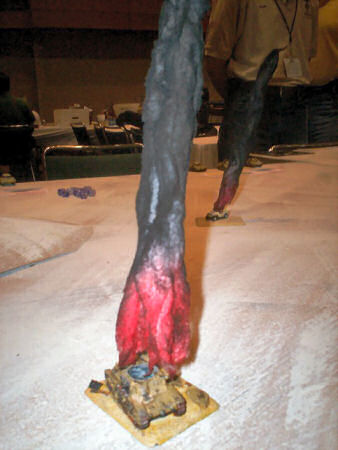I got to take two classes from Sandra and was awed in both of them.
I had my notebook by then, but something happened between my brain and the transcription on paper. What Sandra said was straightforward and obvious from watching but from my notes, it’s hard to relate. I mean, how do you describe in writing that for the eyes, you need to use a spoon-shaped tool and go up-up, down-down, and in-in to make the eye sockets? I'll try to make sense of what I wrote, but this is one of those classes where you definitely get more out of watching than reading about it.
Sandra Garrity - Advanced Sculpting
In the first class, Sandra was going to make a head for us. (Actually, she asked the five of us what we'd like to learn about, and when she got five blank looks, decided to start with something we obviously all needed!)
So, to start making a head, take a small piece of greenstuff and make a disc from it. Let it dry for a bit, and then turn the disc in the direction the head will be facing. The disc needs to be narrower than the face you will end up with, so that when you do the shaping of the head, it does not go beyond the size you desire. Cut off the disc in the area that will be the face.
And before you start, get some models for the facial features and expressions, as they will help you immensely. Sandra stressed that the brain-to-hand connection works better with an image to draw from, than using only your memory.
Sandra has a couple of custom tools she uses. A couple are based on X-acto-style knives that have had the blades rounded on them (as opposed to leaving them sharp). This helps in smoothing.
She also has a modified knife that has a very sharp point, so that she can make precise and thin indentations. The third tool I saw was a piece of brass rod (??) that had been hammered out and cut into the shape of a small spoon. This allowed her to do very nice indentations and hollows.
So back to the head. Take your spoon tool, and draw the chin out from the sides slightly - pulling forward and down for the chin, and then along the jawline. Using the same tool, go back to the eye sockets and hollow them out. Start about halfway down the face, and then use the tool to dig in and pull up, then in-and-down, and then press in slightly until the sockets look the way you want them to. Use the sharp, pointed knife to add in the eyelids if desired.
Sandra stressed that you should sneak up on the details, working on a spot a little at a time, so that you arrive at the result you want rather than overreaching it.
She uses a cooker with a 25-watt bulb in it to help cure the greenstuff when she works, and she claims that you can take a model and place it in the freezer for up to eight hours before it begins to cure.
Some other tips I picked up in this class – use a cut-up plastic milk carton to lay your greenstuff out on, and make thin pieces. Also, if you make filigree, use a rounded pin to trace the design in the greenstuff, and then cut it out.
I have 5 pages of notes from this one class alone. What you have above is the Cliff Notes version (but something more clear than my notes!).
Sandra Garrity - Sculpting Dragons
Next up, dragons! The second class allowed us to see what she was working on as a current project for Reaper. This was a five-headed dragon, that was to be sculpted so that the heads were interchangeable with other dragon heads in the Reaper line! Cool stuff!
Sandra uses 18-gauge copper wire for her armatures, as it does not have the same problems with metal fatigue when frequently bent as does brass rod. When she makes the armatures for the dragons, she does not put all of the metal pieces together, because the models have to be cut apart in order to make the molds - and you would have to cut through the rods.
For wings, she uses brass sheet as the foundation. She stresses, however, that she first draws out the wing pattern and then cuts it out of the brass. Cut out the general shape of the wing - but do not cut claws or extrusions from the wing out of the sheet, as you will end up cutting yourself on the edges. Use copper rod for the larger membranes, and to extend beyond the wings for claws and other sharp pieces.
It is interesting to note that she uses horse models and pictures in structuring the shoulders and muscle flow on the dragon, and for shoulder positioning. A crucial point in the model's development is ensuring that the shoulders and hips take the size of the body into consideration when being sculpted. Too big, and the dragon waddles; too thin, and he's a pushover.
One of the things she showed us (that was a hoot!) was how she makes a lot of the scale patterns. She uses push molds to make stamps for patterns she likes or finds most effective. Then she can use this on the greenstuff, and apply to the model to save sculpting time.
Interesting stuff... My brain was full at the end of the day, and I had to walk to my car carefully to keep from jostling any of the info out of my brain and onto the parking lot.










